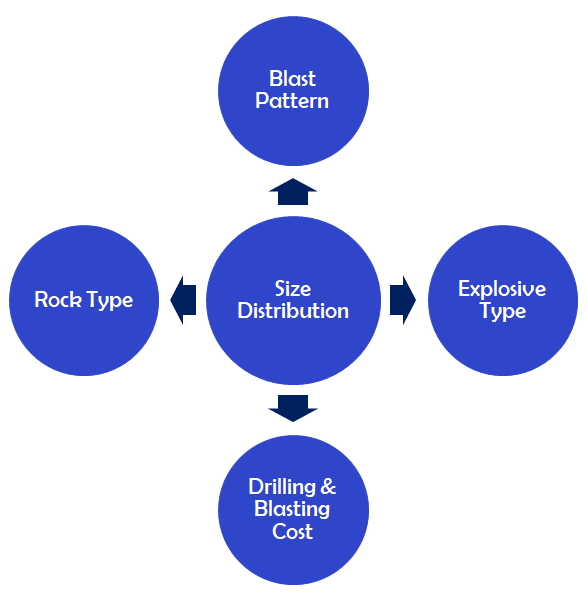Power of analytics in improving rock fragmentation
Blasting is the most economical technique to achieve rock fragmentation in mines and quarries. The main objective of blasting is to realize the fragmentation in the desired size keeping up with the constraints of ground vibration, air overpressure, fly-rocks, and stability. Analytics can be of help in several considerations by providing a better understanding of the process.
Here is how analytics can be useful:
1. Cost Reduction
Shots are planned and executed to obtain rocks, which can vary in their size. Crushing and grinding are next in the process to accomplish size reduction that is suitable for industrial application, and release of ore inclusion from the rock. The cost associated with these processes varies for different operations.
However, in large-scale operations cost of breakage of rocks for these three stages are in order of 1:5:25 for blasting, crushing and grinding respectively. It is prudent to achieve the fragmentation as close as possible to the required size range using blasting such that cost saving and reduced wear can be realized on downstream processes.

Further, by reducing oversize material from blasting, ease of excavation and hauling is achieved thus minimizing cost. Primarily, fragmentation optimization is achieved by; improving distribution of explosives, increasing amount of explosives per unit rock, and enhancing shock energy delivered by the explosives by increasing its density and velocity of detonation. The cost associated with drilling, blasting, hauling, crushing and grinding can be retained and analyzed. Overall, cost comparisons can be performed over different shots and key performance variables can be identified.
2. Assessing Blast Design Parameters
Several blast design parameters including confinement, powder factor, explosive selection, blast-hole diameter, burden and spacing, stemming, initiation sequence, dilution, vibration and air blast, and back-break damage are involved in shot planning. Also, the blast output is measured in terms of rock size distribution achieved after blasting.

Mines and quarries generate data pertaining to blast design and size distribution, which can be utilized to achieve optimization in rock fragmentation. Shot plans can be associated with rock fragmentation, which will provide an insight to a mining engineer. Adjustment in shot plan and pertinent fragmentation change can be visualized using graphs and different analytics tools designed for the purpose. Strayos has an image-based fragmentation platform that analyzes the rock size distribution post blasting. This analytics tool would be an addition that would link the blast design parameter to fragmentation size distribution.
3. Conclusion
Analytics solution can help in faster decision-making and manage the data generated throughout the process. Additionally, data generated during the blast can be stored in a central database, which can be used in the future.
Power of analytics can be used to evaluate the data, identify key performance variables, implement changes, and appraise the outcome. This presents an incredible opportunity to leverage the data generated during blasting such that improvements in terms of cost and fragmentation can be achieved.
Where is your operations on its data driven journey to advanced analytics?

Check out our 2 Free E-books on AI applications for the drilling, blasting, and mining industries to see all the amazing advances that are available.
AI Guide for Drilling and Blasting
AI Guide for Mining
TLDR? Watch our videos instead:
YouTube
